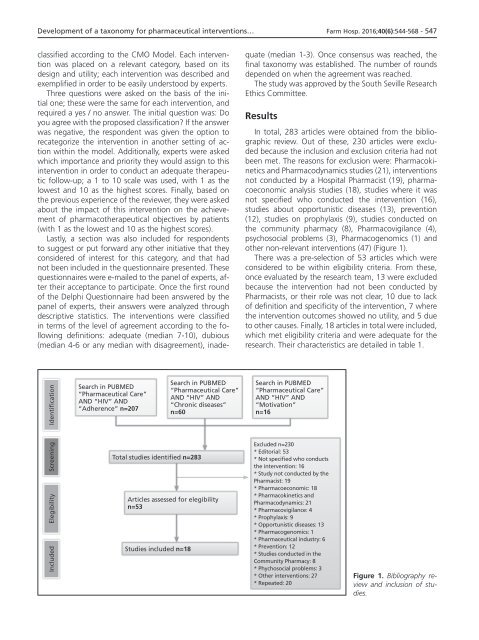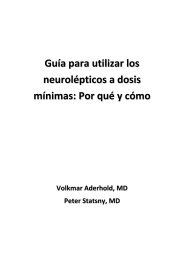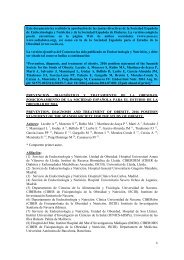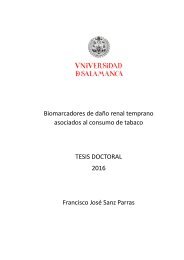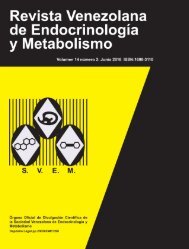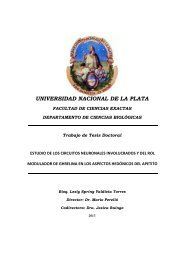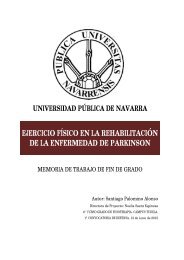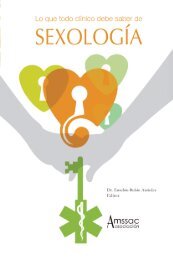Noviembre-Diciembre
156_v40n6(1)
156_v40n6(1)
You also want an ePaper? Increase the reach of your titles
YUMPU automatically turns print PDFs into web optimized ePapers that Google loves.
Development of a taxonomy for pharmaceutical interventions… Farm Hosp. 2016;40(6):544-568 - 547<br />
classified according to the CMO Model. Each intervention<br />
was placed on a relevant category, based on its<br />
design and utility; each intervention was described and<br />
exemplified in order to be easily understood by experts.<br />
Three questions were asked on the basis of the initial<br />
one; these were the same for each intervention, and<br />
required a yes / no answer. The initial question was: Do<br />
you agree with the proposed classification? If the answer<br />
was negative, the respondent was given the option to<br />
recategorize the intervention in another setting of action<br />
within the model. Additionally, experts were asked<br />
which importance and priority they would assign to this<br />
intervention in order to conduct an adequate therapeutic<br />
follow-up; a 1 to 10 scale was used, with 1 as the<br />
lowest and 10 as the highest scores. Finally, based on<br />
the previous experience of the reviewer, they were asked<br />
about the impact of this intervention on the achievement<br />
of pharmacotherapeutical objectives by patients<br />
(with 1 as the lowest and 10 as the highest scores).<br />
Lastly, a section was also included for respondents<br />
to suggest or put forward any other initiative that they<br />
considered of interest for this category, and that had<br />
not been included in the questionnaire presented. These<br />
questionnaires were e-mailed to the panel of experts, after<br />
their acceptance to participate. Once the first round<br />
of the Delphi Questionnaire had been answered by the<br />
panel of experts, their answers were analyzed through<br />
descriptive statistics. The interventions were classified<br />
in terms of the level of agreement according to the following<br />
definitions: adequate (median 7-10), dubious<br />
(median 4-6 or any median with disagreement), inadequate<br />
(median 1-3). Once consensus was reached, the<br />
final taxonomy was established. The number of rounds<br />
depended on when the agreement was reached.<br />
The study was approved by the South Seville Research<br />
Ethics Committee.<br />
Results<br />
In total, 283 articles were obtained from the bibliographic<br />
review. Out of these, 230 articles were excluded<br />
because the inclusion and exclusion criteria had not<br />
been met. The reasons for exclusion were: Pharmacokinetics<br />
and Pharmacodynamics studies (21), interventions<br />
not conducted by a Hospital Pharmacist (19), pharmacoeconomic<br />
analysis studies (18), studies where it was<br />
not specified who conducted the intervention (16),<br />
studies about opportunistic diseases (13), prevention<br />
(12), studies on prophylaxis (9), studies conducted on<br />
the community pharmacy (8), Pharmacovigilance (4),<br />
psychosocial problems (3), Pharmacogenomics (1) and<br />
other non-relevant interventions (47) (Figure 1).<br />
There was a pre-selection of 53 articles which were<br />
considered to be within eligibility criteria. From these,<br />
once evaluated by the research team, 13 were excluded<br />
because the intervention had not been conducted by<br />
Pharmacists, or their role was not clear, 10 due to lack<br />
of definition and specificity of the intervention, 7 where<br />
the intervention outcomes showed no utility, and 5 due<br />
to other causes. Finally, 18 articles in total were included,<br />
which met eligibility criteria and were adequate for the<br />
research. Their characteristics are detailed in table 1.<br />
Included Elegibility Screening Identification<br />
Search in PUBMED<br />
“Pharmaceutical Care”<br />
AND “HIV” AND<br />
“Adherence” n=207<br />
Total studies identified n=283<br />
Search in PUBMED<br />
“Pharmaceutical Care”<br />
AND “HIV” AND<br />
“Chronic diseases”<br />
n=60<br />
Articles assessed for elegibility<br />
n=53<br />
Studies included n=18<br />
Search in PUBMED<br />
“Pharmaceutical Care”<br />
AND “HIV” AND<br />
“Motivation”<br />
n=16<br />
Excluded n=230<br />
* Editorial: 53<br />
* Not specified who conducts<br />
the intervention: 16<br />
* Study not conducted by the<br />
Pharmacist: 19<br />
* Pharmacoeconomic: 18<br />
* Pharmacokinetics and<br />
Pharmacodynamics: 21<br />
* Pharmacovigilance: 4<br />
* Prophylaxis: 9<br />
* Opportunistic diseases: 13<br />
* Pharmacogenomics: 1<br />
* Pharmaceutical industry: 6<br />
* Prevention: 12<br />
* Studies conducted in the<br />
Community Pharmacy: 8<br />
* Phychosocial problems: 3<br />
* Other interventions: 27<br />
* Repeated: 20<br />
Figure 1. Bibliography review<br />
and inclusion of studies.


